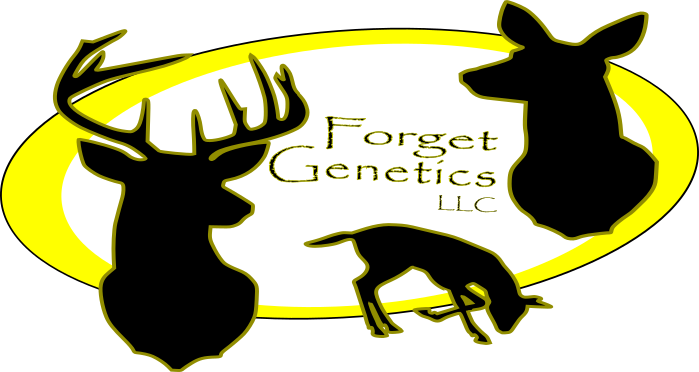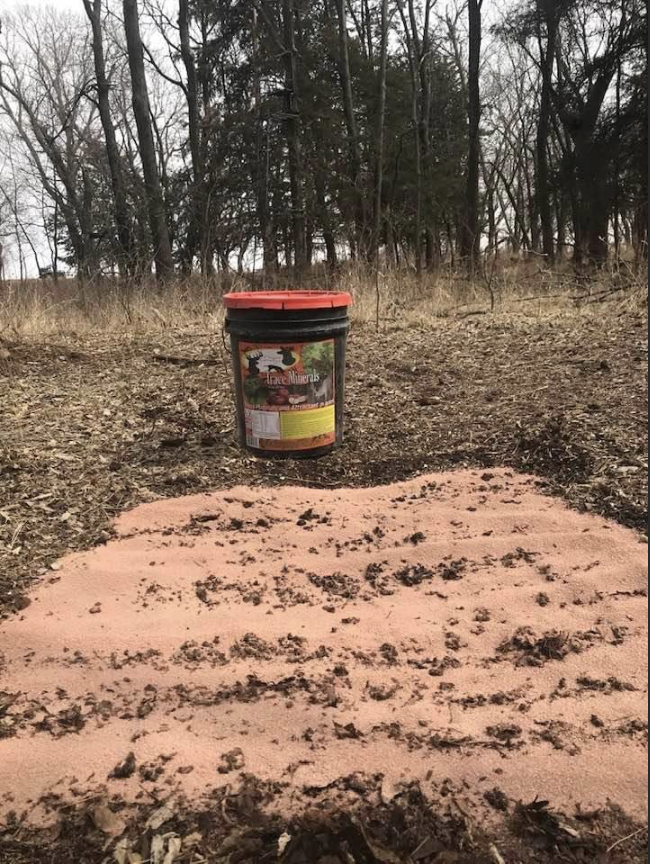For years we here at Forget Genetics have used or tested almost every product on the market. There is always one thing that every manufacturer likes to point the finger at when it comes to their specific product and that is the nutrition label on the back. They point out that it is a perfected scientifically blended mix that is better than any competitor to their left and right. When it comes down to it many of these brands are just within just a few percentage points of each other. Almost all of them use the standard 2-1 Calcium to Phosphorous ratio or we have even seen this at 3-1 and sometimes 4-1 as well.
We here at Forget Genetics put many of our mineral competitors to the test when we were developing our mineral mix. Many notice when they turn over our bag that we diverted away from the industry standard of2-1 calcium to phosphorus. This is not by accident, this is where we took the “scientifically blended” to the next level of science. We stepped away from the high fence farming community and took our products to the field and began to study. When we say “field” tested we mean both public and private lands, we wanted to work with real wild deer.
When we started our study the first benchmark was to manage frequency. What I mean by this is how often we had deer coming into our mineral sites and how quickly they react. This is where we learned a lot, it is also where our 1-1 Calcium to Phosphorous ratios came from. We noticed that by dropping our Calcium levels down in our mixes we picked up the frequency of deer to our mineral stations. It also seemed to have a faster reaction for deer to return to our mineral station as well. What I mean by this is that when we were using the 2-1, and 3-1 ratios deer would come into our stations and take a lick or two and then not come back for days. At times it wasn’t until it rained or we had a heavy dew that the deer were returning. (During these studies we also used other off-the-shelf brands to maintain a baseline for our study)
We have seen what in the farming industry is referred to as sour mouthing. When an animal intakes these higher ratios it seems they get a raunchy taste in their mouth which deters them from coming back. When the minerals get rained on or there is a heavier dew, these, minerals are then diluted into the soils around them at which time it may make it more palatable for the animal. These are the same findings we found when studying mineral lick blocks that many have used from the big box stores. Deer don’t lick these blocks, they wait until the blocks get rained on and the water washes over the block melting it into the soil. They then dig at the edges to get to the salt.
When we lowered our calcium levels to a 1-1 ratio we managed to increase the frequency of the deer that we had coming into our mineral sites. It seemed that our findings made our mineral mix more palatable for the animal to intake directly. We went from having animals every few days to almost having the same animals multiple times a day. We also went a step further and made our minerals more palatable by adding our flavor infusion. This is also one of the reasons in many cases we have animals coming to our newly established sites within hours of them being applied instead of days or even weeks. Also by adding our flavoring to the mixtures we didn’t have to rely on salt to act as our attractant. Yes, we have salt in our mix, as do almost every other manufacturer out there. Yes, salt doesn’t grow antlers, but it is very important to any mineral mixture. Lastly, with our flavoring addition, we also noticed that when many deer start to turn off of mineral sites in the late summer or early fall ours continues to be productive. Today many of our customers use our minerals as a sort of bait for them to hunt with because they continue to work. This is also helpful for the year-round development of our herd.
The next benchmark of our study led us to intake and how we get those numbers on the back of the bag into the animal. When all of our competitors out there talk about their products they use words like “scientifically blended” or they quote university studies. These are all great and also where we started. We at Forget Genetics wanted to take it to a new level of science. Many of our competitors rely on or are milling companies already. They take these percentages that they want “scientifically blended” and rely on the mill to select the proper ingredients and then package it for sale. In many cases between mixture batches, they lose control of what ingredients were even used to blend due to the mills changing brands of ingredients due to pricing changes. This is where we differ and how we studied intake.
In the morning we get up and have a bowl of cereal and milk for breakfast. We turn over the box of cereal and read all of the nutritional values on the back of the box. There is one thing in common when we look at these nutritional values and that is how we manage to get them into our bodies. It’s in a serving or bowl. If you were to eat all of the cereal from the bowl you know that you are getting all of the nutritional values mentioned on the box. Now, take that same bowl of cereal and dump it on the ground. How do those numbers reflect nutritional value now? It’s the same concept when it comes to our wild deer testing. We are not feeding from a bowl or trough are we? We walk into the woods and scatter our minerals onto the ground. In many cases manufacturers have you rake their products into the ground, even further changing ratios on the back of the bag. When the rain or dew comes into play what happens then to those numbers on the back of the bag? (You can only understand this by pulling samples at different times and having them analyzed)
Our intake studies were managed by being able to mix and hand-select ingredients that we use for a specific reason. When you look at our minerals different colors are being poured onto the ground. There is always a consistent color of granule that will remain on the surface and that is a small gray granule. When hand selecting the ingredients in our studies we managed to watch how our minerals were absorbed into the ground and also how deer took them in. The whites, pinks, and red will absorb faster leaving the grays on the surface, they are more buoyant. This gray granule is your calcium and Phosphorous. When the deer are coming into your mineral sites they are now being force-fed these specific ingredients without them even knowing (No sour mouthing). They are after the flavors and other minerals that are absorbed underneath them. It’s almost like wrapping a dog’s pill in bacon to put it into perspective. This is how we worked to control and know that when deer are utilizing our mineral sites they are getting the full potential of our numbers as well.
In closing, it’s not just guesswork or gimmicks with our blends. We didn’t plagiarize other people’s studies just simply mix what everyone else is doing. We took a step in a different direction with our research and science. The countless hours we spent researching and field testing products on wild non-high fence farm deer is the science we included in our product. Our studies weren’t just limited to Whitetail Deer it was also Mule Deer and Elk. We mix, package, and distribute our minerals, we don’t send some numbers to a mill and have them package it for us as many do. We take a lot of pride in what we mix and you will find that our system may be different but you can’t argue with the results.

